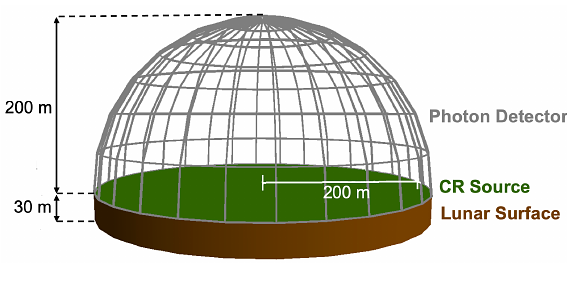The Moon as a Cosmic-Ray Spectrometer: Prospects for MeV Gamma-Ray Observations

The Moon as a Cosmic-Ray Spectrometer: Prospects for MeV Gamma-Ray Observations
Tatsuki Fujiwara, Ellis R. Owen, Yoshiyuki Inoue, Manel Errando, Kohei Fukuda, Kazuhiro Nakazawa, Hirokazu Odaka, Keigo Okuma, Kentaro Terada, Naomi Tsuji, Yasunobu Uchiyama, Hiroki Yoneda, Ao Zhang
AbstractThe Moon is the closest celestial gamma-ray emitting object. Its gamma-ray emission arises from interactions between Galactic cosmic rays (CRs) and the lunar surface. While the lunar GeV gamma-ray spectrum is dominated by a continuum from hadronic decay processes, the MeV emission exhibits both continuum and distinctive spectral lines from nuclear de-excitation and radioactive decay processes. Using Geant4 Monte Carlo particle simulations, we model the lunar gamma-ray spectrum. Our results demonstrate its consistency with Fermi-LAT observations, and predict that next-generation MeV gamma-ray instruments will detect both the lunar MeV continuum and several key spectral line features, notably the $1.779~\mathrm{MeV}$ line from $\mathrm{^{28}Si}$ de-excitation enhanced by the lunar surface composition, the $e^+e^-$ annihilation line, and radioactive decay lines from $\mathrm{^{22}Na}$ ($\tau\approx3.75\,\mathrm{yr}$) and long-lived $\mathrm{^{26}Al}$ ($\tau\approx1\,\mathrm{Myr}$). These gamma-ray lines are sensitive to CRs with energies $\lesssim1\,\mathrm{GeV\,nuc^{-1}}$, offering unique temporal probes of CR activity over different timescales. Observations of the lunar MeV gamma-ray spectrum will therefore open a new window to study the current irradiation of the solar-terrestrial environment by low-energy CRs and its long-term temporal evolution.